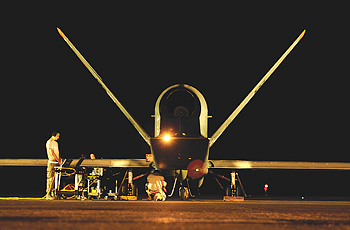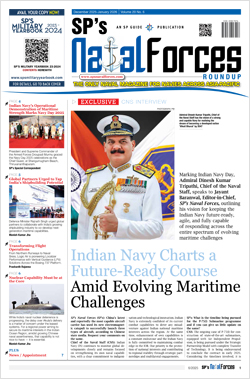INDIAN ARMED FORCES CHIEFS ON OUR RELENTLESS AND FOCUSED PUBLISHING EFFORTS

The insightful articles, inspiring narrations and analytical perspectives presented by the Editorial Team, establish an alluring connect with the reader. My compliments and best wishes to SP Guide Publications.

"Over the past 60 years, the growth of SP Guide Publications has mirrored the rising stature of Indian Navy. Its well-researched and informative magazines on Defence and Aerospace sector have served to shape an educated opinion of our military personnel, policy makers and the public alike. I wish SP's Publication team continued success, fair winds and following seas in all future endeavour!"

Since, its inception in 1964, SP Guide Publications has consistently demonstrated commitment to high-quality journalism in the aerospace and defence sectors, earning a well-deserved reputation as Asia's largest media house in this domain. I wish SP Guide Publications continued success in its pursuit of excellence.
- Global Partners Urged to Tap India's Shipbuilding Potential: Rajnath Singh at Samudra Utkarsh
- All about HAMMER Smart Precision Guided Weapon in India — “BEL-Safran Collaboration”
- India, Germany deepen defence ties as High Defence Committee charts ambitious plan
- G20 Summit: A Sign of Global Fracture
- True strategic autonomy will come only when our code is as indigenous as our hardware: Rajnath Singh
- India–Israel Joint Working Group Meeting on defence cooperation to boost technology sharing and co-development
UAVs
Riding the Waves

amoxil without prescription
amoxil without prescription andrewwestgarth.co.uk amoxicillin price without prescriptionThe Navy has a requirement for both rotary wing and fixed wing UAVs. Airborne naval intelligence surveillance reconnaissance (ISR) also has a different environment to operate in.
Unmanned Aerial Vehicles (UAVs) can be employed and deployed in multiple roles and situations. They are thus increasingly being employed in support of army, air force, navy, marines, homeland security and civilian uses. The Navy has a requirement for both rotary wing and fixed wing UAVs. Airborne naval intelligence surveillance reconnaissance (ISR) also has a different environment to operate in.
Rotary Wing UAV
The Navy has a different requirement when employed on board ships as fixed wing UAVs will require special arrangements for takeoff and landing, but a vertical takeoff and landing (VTOL) version would be most suitable. The US as usual is the forerunner in this field with the US Navy’s first operational VTOL UAV system was the drone anti-submarine helicopter (DASH) QH-50, introduced way back in January 1963 which also gave the ships ASW torpedo attack capability. From 1970s onwards, many VTOL UAV proposals such as the Bombardier (Canadair) CL-227 sentinel, maritime VTOL UAV system (MAVUS), tiltrotor UAV system (TRUS) eagle eye of Bell Helicopter Textron, Boeing’s Heliwing were tried out. However, during February 2000, the US Navy chose Northrop Grummanryan Aeronautical’s RQ-8A fire scout as its vertical take-off and landing tactical unmanned air vehicle (VTUAV), and accordingly they were given the engineering and manufacturing development contract. The role of fire scout envisaged was to provide situational awareness and precision targeting support to the US Navy and Marine Corps. during 2005, Fire scout was re-designated to MQ-8 to indicate its multiple role capability, including the ability to deploy weapons. Incidentally, the US Navy had acquired AAI Corporation/Israel Aircraft (now Aerospace) Industries’ pioneer UAV during 1986, to operate from its Iowa class battleships. It has logged more than 20,000 flight hours since its induction and was very successful during operation desert storm/shield, where it was used for naval gunfire support and battle damage assessment (BDA). It is still in service with the US Navy.
Fire Scout
Fire scout has been designed to operate from any aviation-capable warship and also from unprepared landing zones. It can carry out reconnaissance, surveillance, and target acquisition (RSTA) and BDA. In september 2003, an improved version was selected by the US Army for a brigade level variant to make its maiden flight in 2011.
In March 2004, the US Navy placed a contract with Northrop Grumman for the development of the MQ-8B Fire scout for deployment on the new littoral combat ships (LCS). Nine air vehicles were to be produced under the system development and demonstration contract, which was to be completed in 2009.
MQ-8B platform for the Army is the same for the Navy but has different payload, tailor made for its role. Northrop Grumman has also carried out development of the weaponised version with 2.75-inch rocket launchers and has successfully fired the rockets. It has also successfully demonstrated beyond the line of sight communications relay so that seamless communications can be carried out between the commanders and troops on the move.





